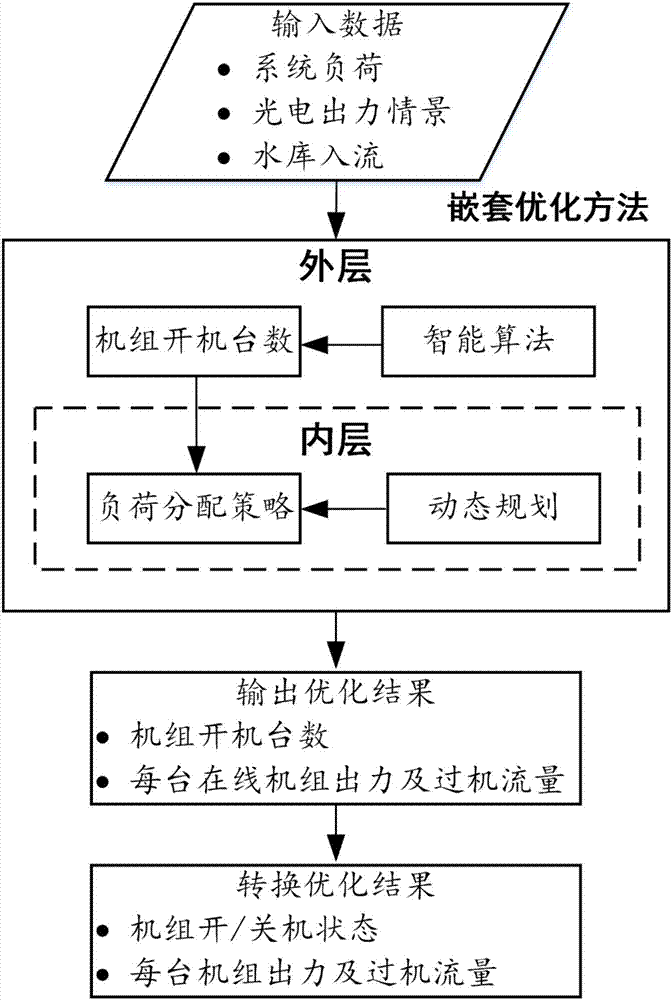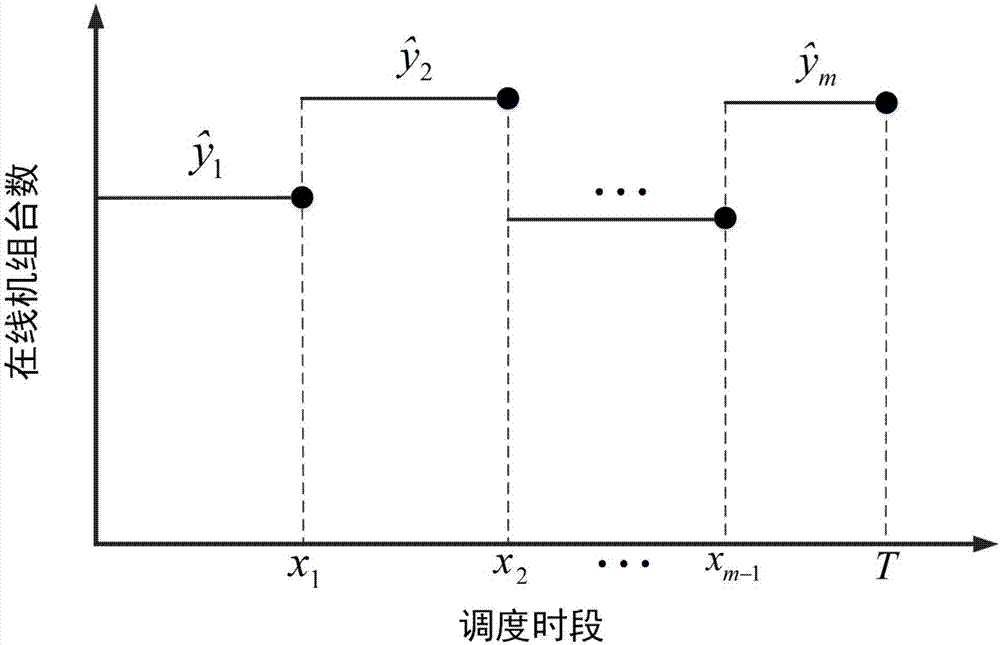Nested optimization method for solving unit combination problem of water-light complementary power station
A power station unit, water-light complementary technology, applied in design optimization/simulation, electrical digital data processing, instruments, etc., can solve problems such as coupling constraints that cannot be effectively processed, occupy the inner layer of calculation, and unify calculation accuracy and efficiency. Realize the effect of safe and economical operation and optimize the number of variables
- Summary
- Abstract
- Description
- Claims
- Application Information
AI Technical Summary
Problems solved by technology
Method used
Image
Examples
Embodiment Construction
[0018] The specific implementation of the nested optimization method for solving the combination problem of hydro-solar hybrid power station units involved in the present invention will be described in detail below in conjunction with the accompanying drawings.
[0019]
[0020] Such as figure 1 As shown, the nested optimization method for solving the unit combination problem of hydro-solar hybrid power station provided by this embodiment includes the following steps:
[0021] 1. Predict the photoelectric output process; consider the uncertainty of the forecast, generate a variety of photoelectric output scenarios, and calculate the probability corresponding to each scenario;
[0022] First, mathematical statistical methods or physical methods are used to predict the photoelectric output process of the next day (P t ,t=1,...,T);
[0023] Second, the predicted output process is subtracted by different forecast errors (e 1 ,e 2 ,e 3 ) can generate a variety of scenarios. ...
PUM
 Login to View More
Login to View More Abstract
Description
Claims
Application Information
 Login to View More
Login to View More - Generate Ideas
- Intellectual Property
- Life Sciences
- Materials
- Tech Scout
- Unparalleled Data Quality
- Higher Quality Content
- 60% Fewer Hallucinations
Browse by: Latest US Patents, China's latest patents, Technical Efficacy Thesaurus, Application Domain, Technology Topic, Popular Technical Reports.
© 2025 PatSnap. All rights reserved.Legal|Privacy policy|Modern Slavery Act Transparency Statement|Sitemap|About US| Contact US: help@patsnap.com



